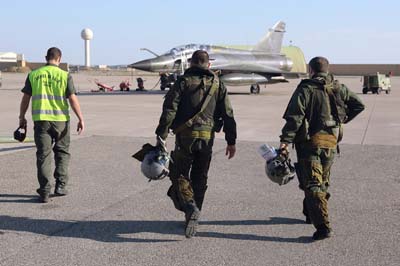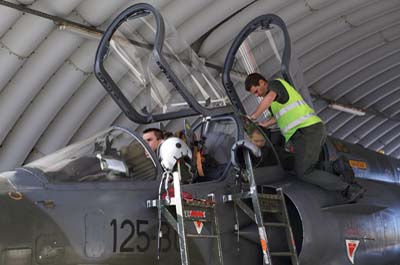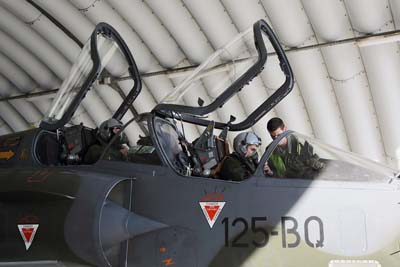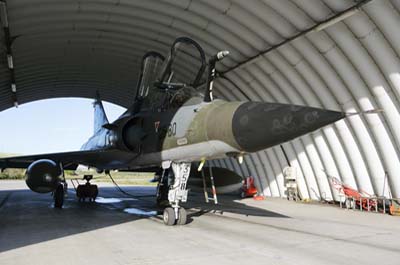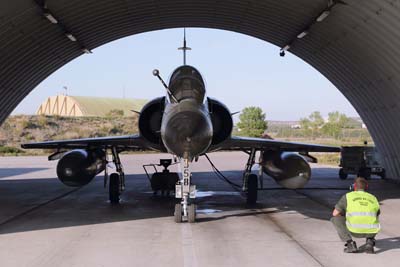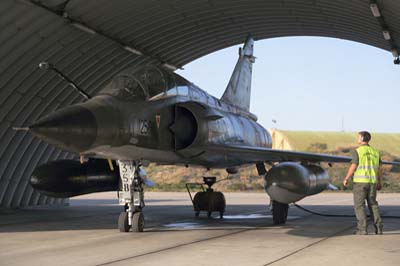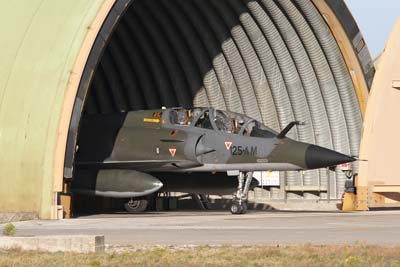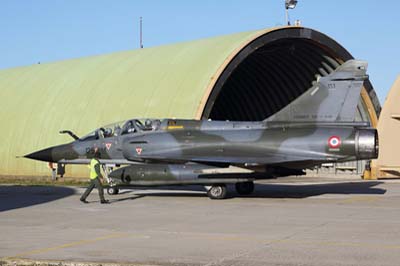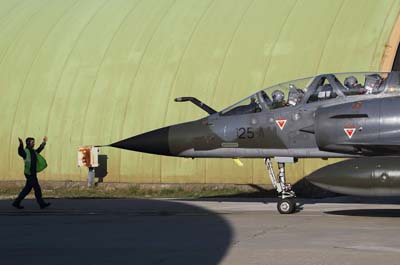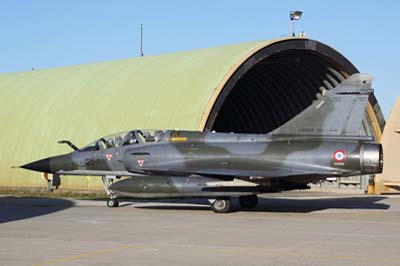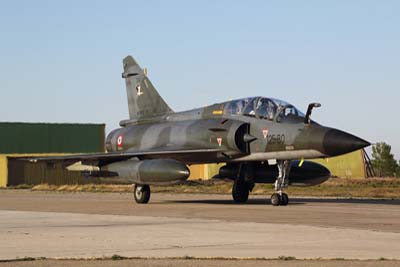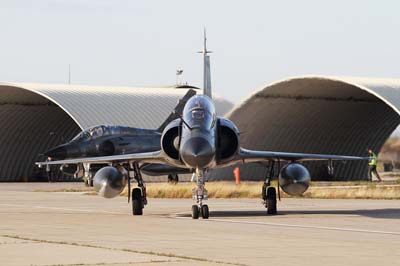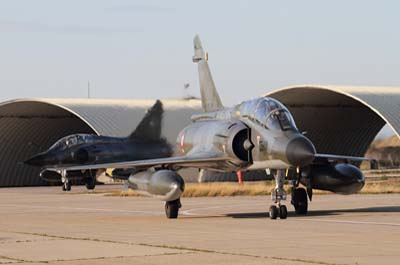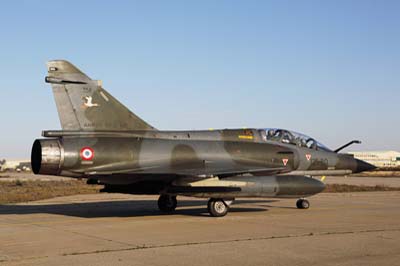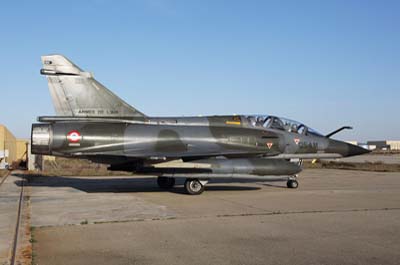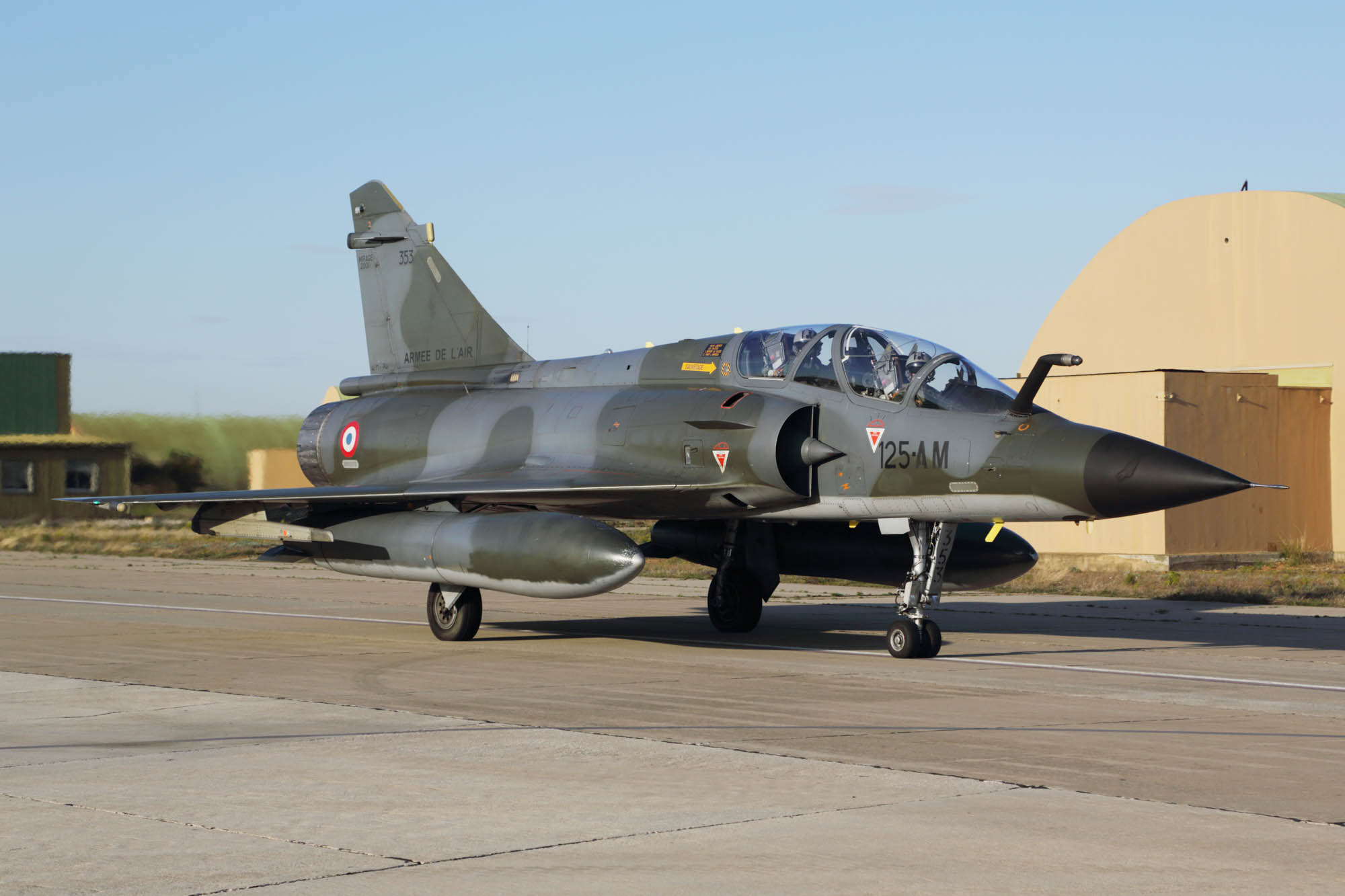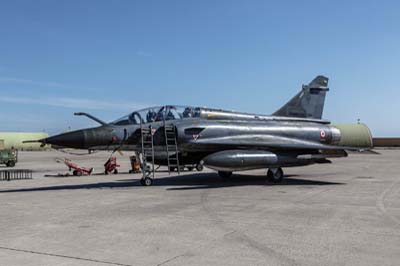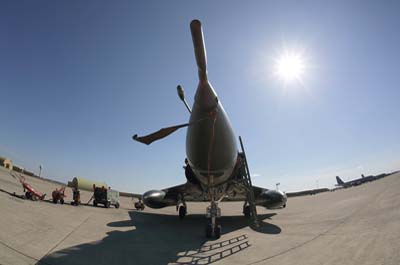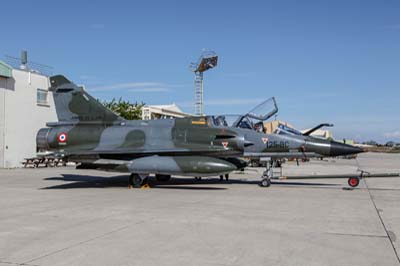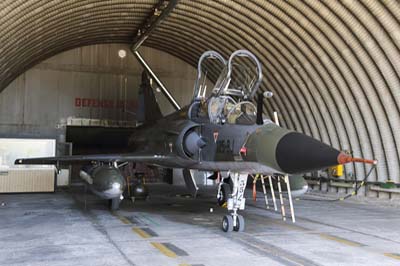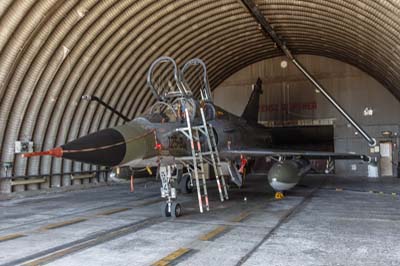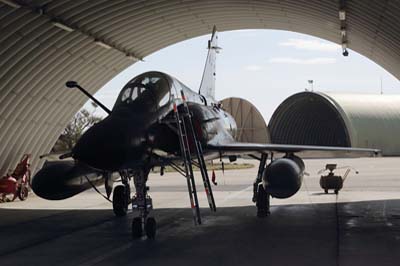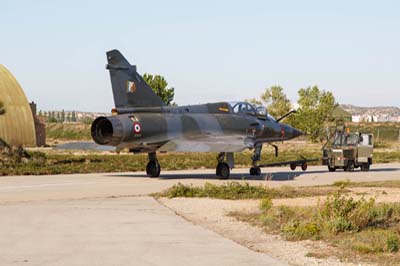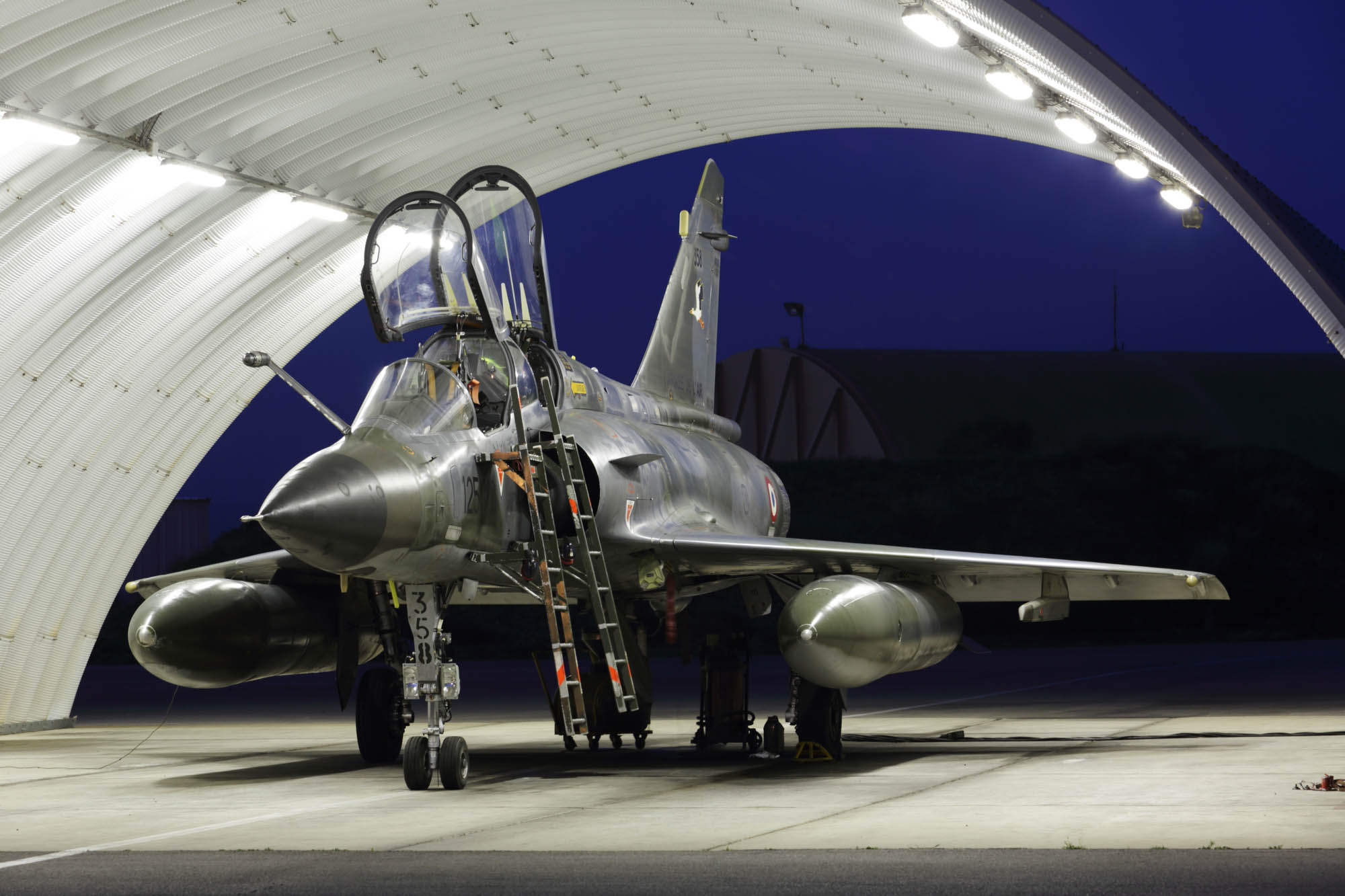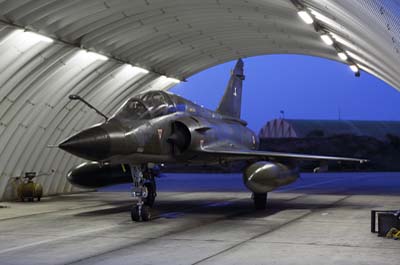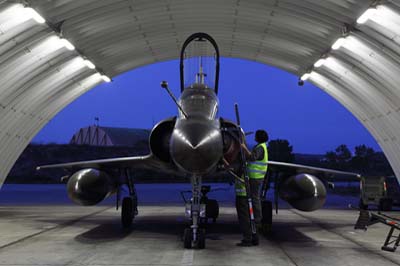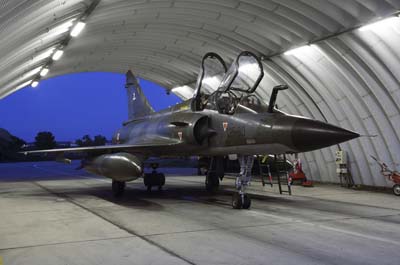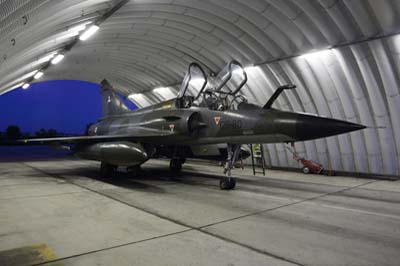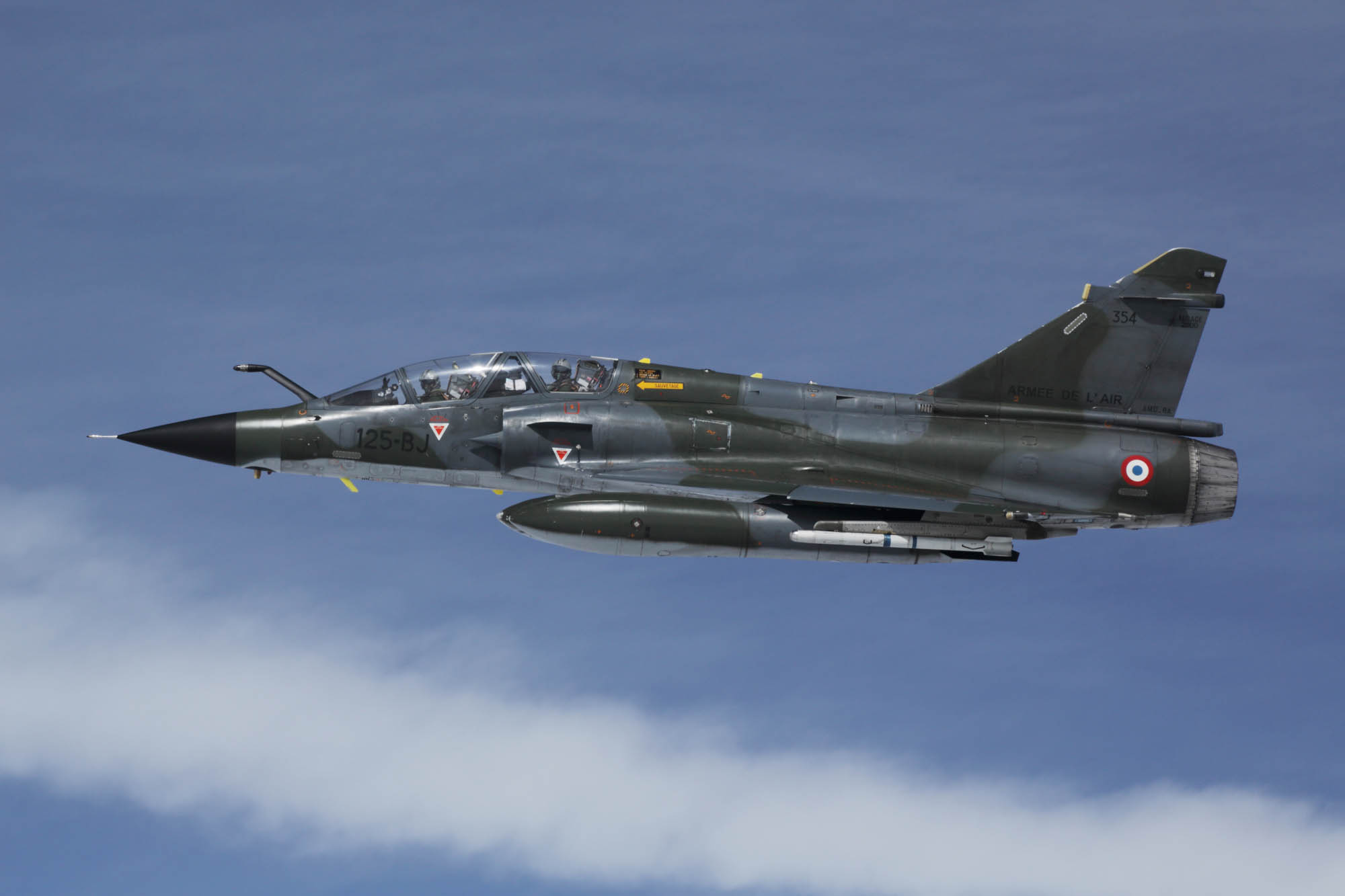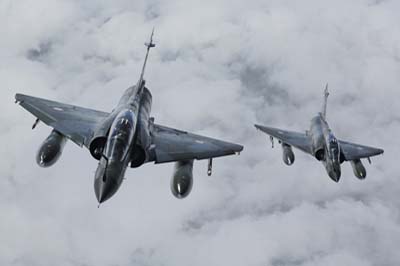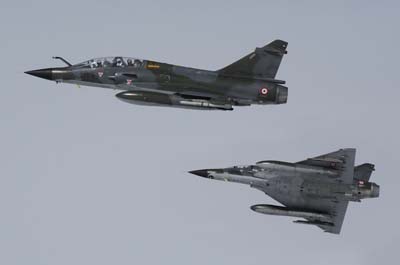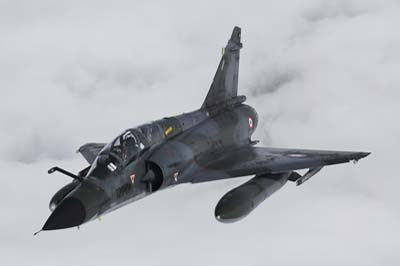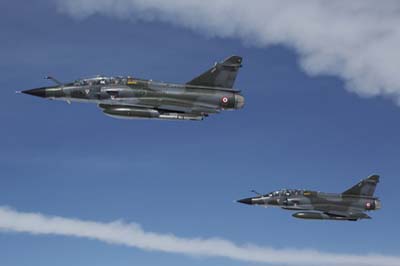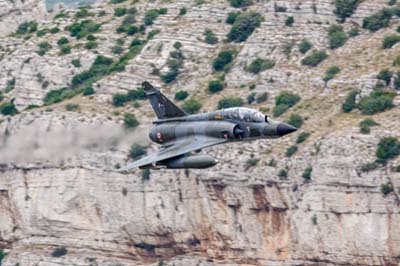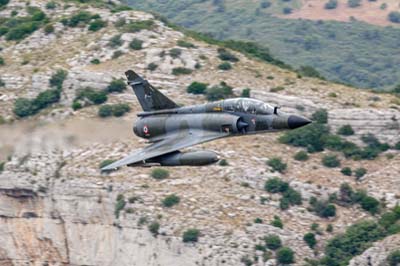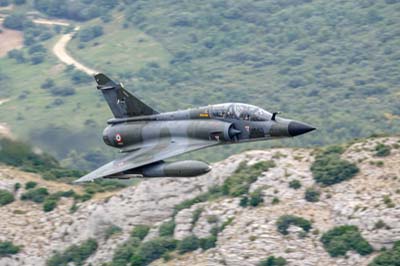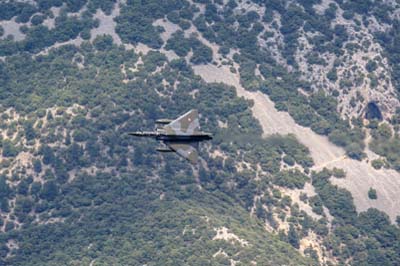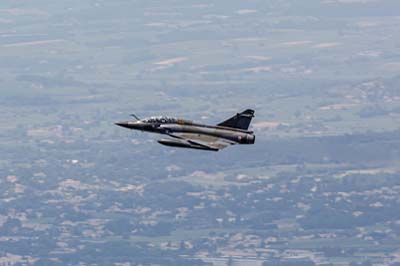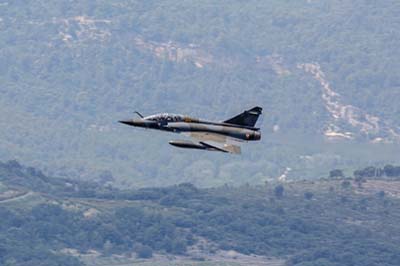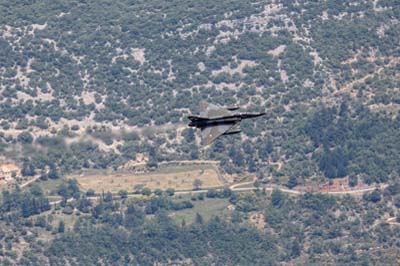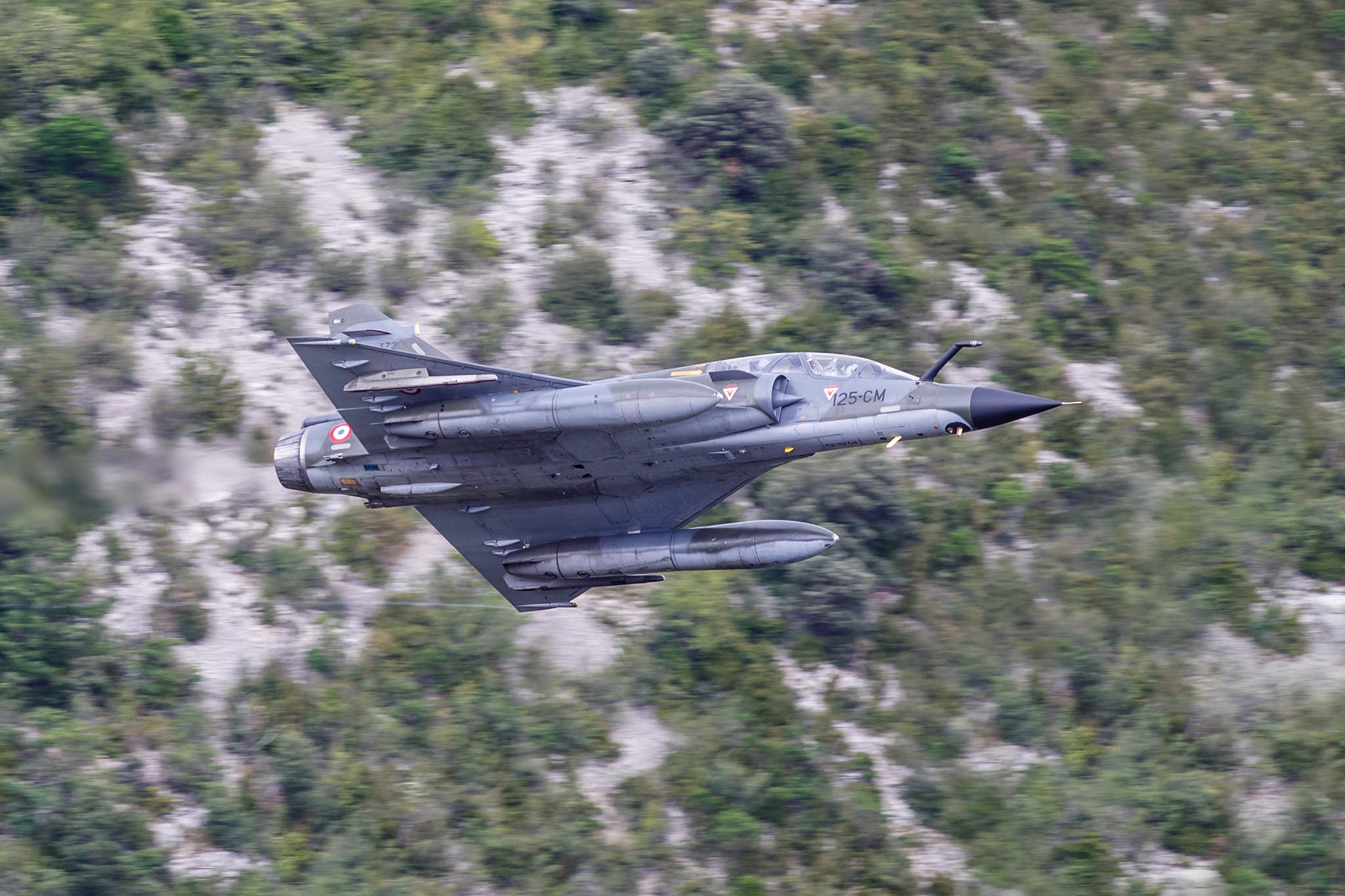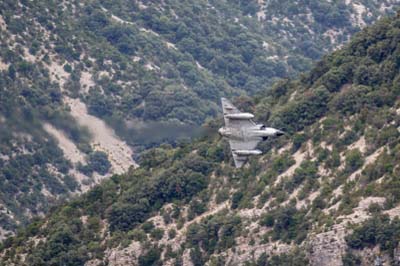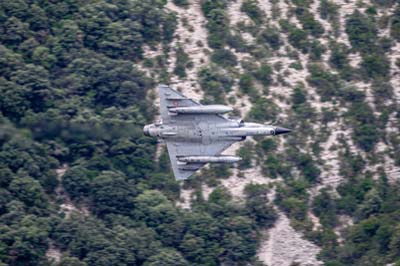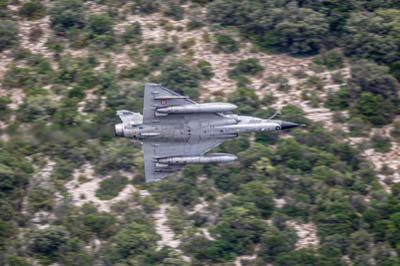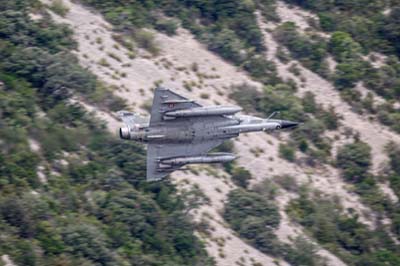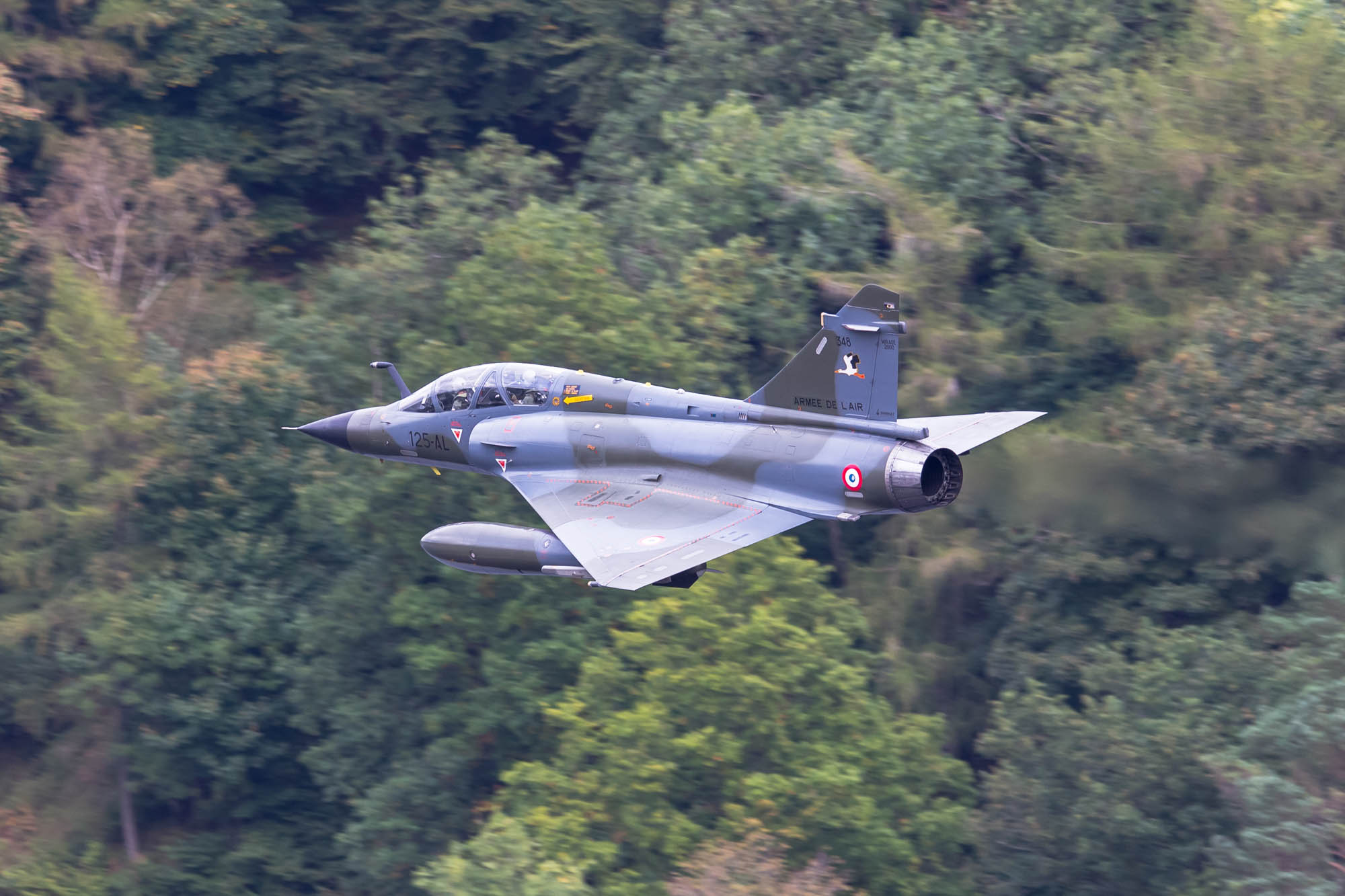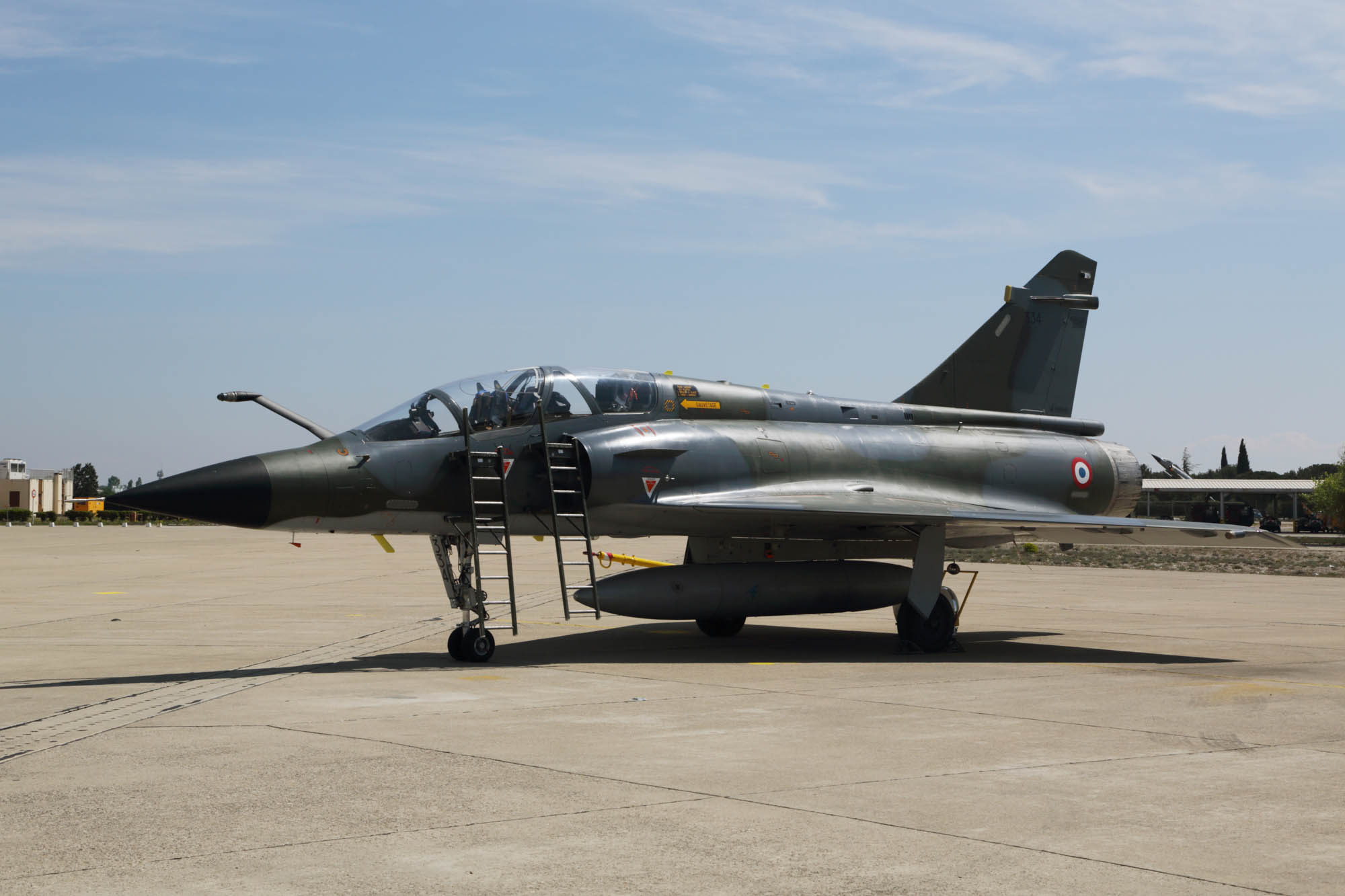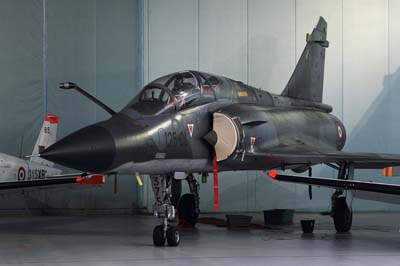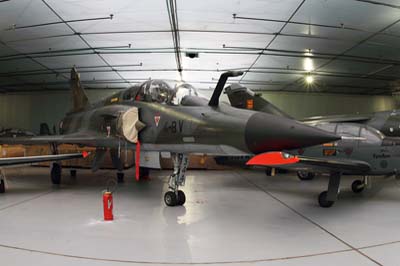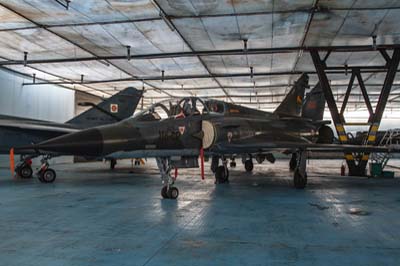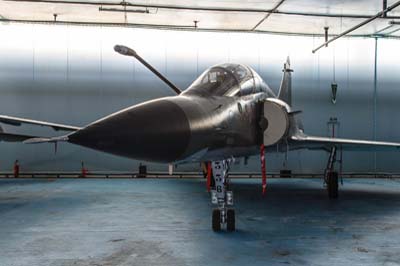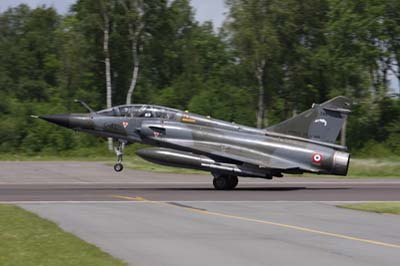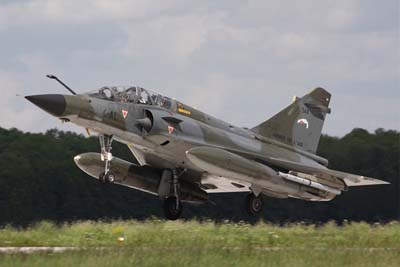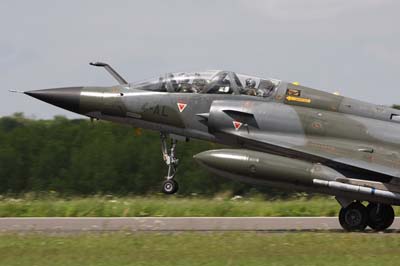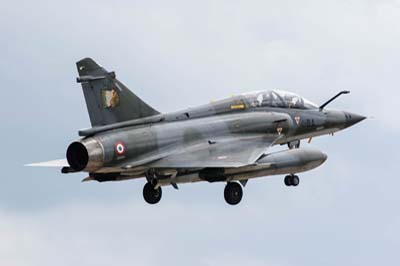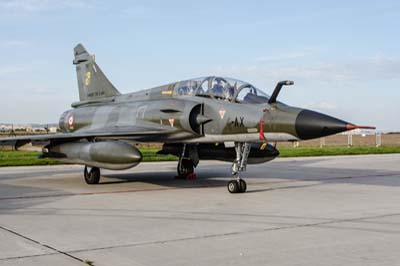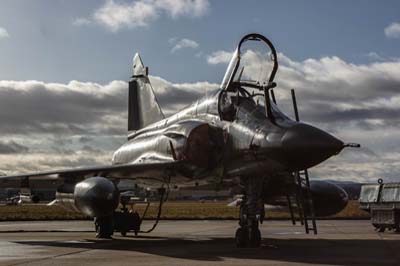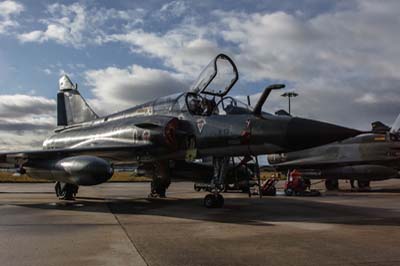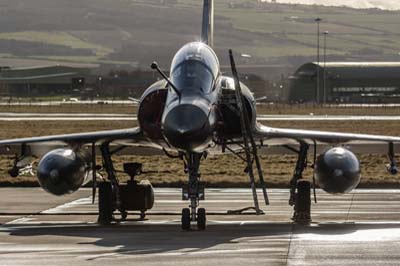French Air Force - Armée de l'Air
Dassault Mirage 2000Ns of EC 02.004 'La Fayette'
Istres-Le Tubé (BA 125)
April to September 2012
|
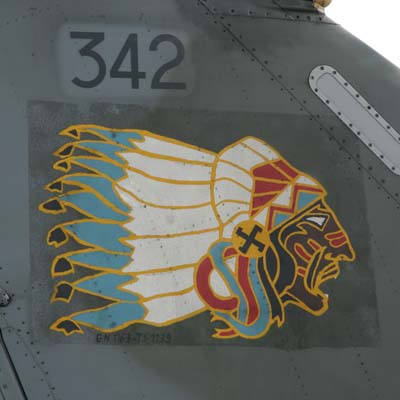
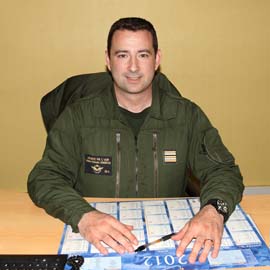 |
Lieutenant-Colonel Frédéric-Guillaume Ohrenstein, Commanding Officer of EC.02 of the only Dassault Mirage 2000N squadron.
Career: 1994 Air Force Academy, one semester at Colorado Springs, Tours, Cazaux. In 1999 2/4 Luxuiel 1999 M2000N followed by JFAC in Afghanistan, War College in Paris. Istres Squadron Commander, retired as a fighter pilot in July 2012. |
The Mirage 2000N's primary role is nuclear strike, flying fast and low under Radar coverage to avoid detection deep in to enemy territory. The Mirage 2000N is optimised for high speed at low-level utilising TFR (Terrain Following Radar) for all weather operations day or night. Lt Col Ohrenstein the Mirage 2000N squadron Commanding Officer has the responsibility to make sure his aircrew are trained to an optimum level of performance. In an exclusive interview he talked about the role of the Squadron and the Mirage 2000N; "The paradox of the nuclear mission is that it is successful if it doesn't happen, my responsibility is to guarantee everything works."
All Mirage 2000Ns are now based at Istres-Le Tubé air base in the south of France their pilots will fly 60% of their hours at low-level. "Peace time rules allow us to fly at 550 knots and 250 feet (76m), it is very dangerous, we are flying just five seconds from the ground and mistakes can happen. We lost one crew in March 2011 so we are very careful about this risky mission but it is our business", explained Lt Col Ohrenstein.
The mission is very demanding crews fly 180 hours per year most is at low-level. "Peace time rules allow us to fly at 550 knots and 250 feet (76m) it is very dangerous, we are flying just five seconds from the ground and mistakes can happen. We lost one crew in March 2011 so we are very careful about this risky mission but that is our business."
Pilot Training
Students successfully completing the AJeTS course will progress to a frontline squadron after an aircraft type conversion course. Students selected to fly the Mirage 2000N will transfer to Orange-Caritat (BA 115). The conversion training course consists 50 to 60 flight hours on the twin-stick Mirage 2000B and later solo on the single seat Mirage 2000C. Pilots will learn the basics; landing, take-off, instrument flight, formation flying, dog-fights and low-level flying. Low-level flying conversion on the Mirage 2000 enables the pilot to handle a single engine delta wing aircraft with large fuel tanks and heavy external loads for the first time.
Pilots now transfer to the training centre at Istres to learn TFR and nuclear role. It takes one year of training for pilot and WSO which includes management of the mission, monitoring systems and electronic warfare before they are combat ready. In the year they fly 180 hours of flying and with 50 hours on the simulator.
Usually low-level training sorties have a TFR phase of at least between ten and 15 minutes. The TFR system provides built in safety and will automatically pull the aircraft up if anything goes wrong. Only the WSO (Weapons Systems Officer) knows where the obstacles are by following the track on his moving map screen. The pilot just looks ahead as does the TFR which will look to the side in the turn. Lt Col Ohrenstein said; "It can be frightening flying TFR at night, you can't see the mountains but you know they are there. The aircraft is flying itself while the pilot has a soft hand on the stick ready to react should anything go wrong."
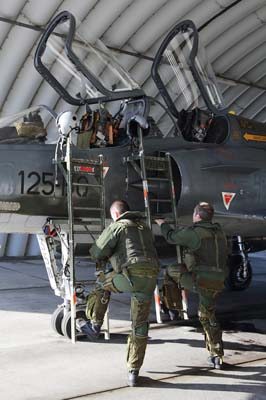 "A young pilot will just look at his screen as you gain experience you increase your situational awareness by looking around you eventually build up to working with a wing man, two ship, four ship and eventually a large formation or COMAO. The tactics depend on the level of support you have such as AWACS. A tactic is to put the sweepers between you and the CAP (Combat Air Patrol) to suppress the threat, if you can't suppress the threat you need to avoid the threat." "It can be frightening flying TFR at night, you can't see the mountains but you know its there, there are constant dangers such as of power lines. Only the WSO knows where the obstacles are by following the track on his moving map screen [WSOs can switch to the Radar screen], the pilot just looks ahead as does the TFR which will look to the side in the turn. "The crews are talking very precisely all the time using set SOPs (Standards of Procedures) to ensure all pilots can work with all WSOs. The main job of the WSO is to provide orientation to the pilot if you are flying 'India-Mike' [IMC - Instrument Meteorological Conditions is when you fly using instruments only]."
"A young pilot will just look at his screen as you gain experience you increase your situational awareness by looking around you eventually build up to working with a wing man, two ship, four ship and eventually a large formation or COMAO. The tactics depend on the level of support you have such as AWACS. A tactic is to put the sweepers between you and the CAP (Combat Air Patrol) to suppress the threat, if you can't suppress the threat you need to avoid the threat." "It can be frightening flying TFR at night, you can't see the mountains but you know its there, there are constant dangers such as of power lines. Only the WSO knows where the obstacles are by following the track on his moving map screen [WSOs can switch to the Radar screen], the pilot just looks ahead as does the TFR which will look to the side in the turn. "The crews are talking very precisely all the time using set SOPs (Standards of Procedures) to ensure all pilots can work with all WSOs. The main job of the WSO is to provide orientation to the pilot if you are flying 'India-Mike' [IMC - Instrument Meteorological Conditions is when you fly using instruments only]."
Planning a low-level mission......
"The first thing, which is paramount, is the morning coffee in the bar [early one morning I found Lt Col Ohrenstein serving in the bar], you then have the weather brief. You then find out what low-level areas are already booked for sorties or exercises. You now plan your mission with your timings which can take around an hour to 1.1/2 hours before you brief your mission for 30 to 40 minutes which is around one hour before take-off. You can then fly a two hour mission. 30 minutes to eat and followed by a 30 minute debrief. A flight will therefore take half a day either in the morning or the afternoon." Mission types and their frequency are issued by French Air Force HQ as training objectives in the form of a written instruction book. I have four officers who assign specific missions for the aircrew", this is to ensure aircrew stay current on each type of mission."
The Dassault Mirage 2000
A total of 315 Mirage 2000 were delivered to the AdlA, of which several variants have been produced;
2000C and upgraded 2000-5F (serials 1 to 124), a single-seat fighter it entered service in 1984. 124 2000Cs delivered 37 of which updated to 2000-5F standard.
2000B (serials 501 to 530), a two-seat trainer based on the 2000C, it entered service in 1983.
2000N (serials 301 to 375), a two-seat nuclear strike aircraft based on the 2000B, it entered service in 1988, the last one built was in 1993.
2000D (serials 601 to 686), a two-seat conventional strike aircraft, it entered service in 1995.
The two-man crewed Mirage 2000N was developed by Dassault Aviation as a nuclear strike version of the Mirage 2000B and entered service in 1993. It is a very effective all weather day and night platform combining the latest navigation and targeting systems and able to delivery precision-guided munitions. It’s Thales designed terrain following radar allows the aircraft to fly down to 200 feet (91m) at 691 mph (1112 km/h). The Mirage 2000 evolved from the very successful Mirage III, the first prototype flew in 1978. A total of over 600 aircraft have been built for nine air forces. |
| Around Base Aérienne 125 Istres-Le Tubé |
| Preparing for flight and Mirage 2000N (358 '125-BQ'). |
| Left to right: Mirage 2000Ns (358 '125-BQ' and 353 '125-AM'). |
| Left to right: Mirage 2000Ns (353 '125-AM' and 358 '125-BQ'). |
| Left to right: Mirage 2000Ns (353 '125-AM' and 358 '125-BQ'). |
| Mirage 2000N (353 '125-AM') |
| Left to right: Mirage 2000Ns (370 '125-CQ' and 366 '125-BC'). |
| Left to right: Mirage 2000Ns (354 '125-BJ', 359 '125-AK' and 348 '125-AL'). |
| Mirage 2000N (358 '125-BQ') 20% of the pilot's flying hours are flown at night all year between 20:00 to 04:00 hours. |
| Left to right: Mirage 2000N (358 '125-BQ'). |
| Mirage 2000N (354 '125-BJ') |
| Left to right: Mirage 2000Ns (354 '125-BJ' and 361 '125-CK') from EC 02.004 in April 2012 |
| Mirage 2000N (370 '125-CQ') of EC 02.004 'La Fayette' based at Istres-Le Tubé (BA 125). |
| Left to right: Mirage 2000N (370 '125-CQ'). |
| Left to right: Mirage 2000Ns (372 '125-CM' and 335 '125-CI'). |
| Mirage 2000N (372 '125-CM') in a short narrow valley in. |
An exciting and extraordinary new location with two passes from a Mirage 2000N the second pass through a very wide part of the valley.
Left to right: Mirage 2000N (372 '125-CM'). |
| Mirage 2000N (348 '125-AL') during the Ramex exercise in the UK when deployed to RAF Leeming in October 2013 |
| Mirage 2000N (334) with the Direction Générale de l’Armement (General Directorate for Armament - DGA) based at Istres. |
| Left to right: Mirage 2000N (375 '125-CL', 344 '4-BV', 322 '116-CP' and 336 '116-BI') with the Entrepôt de l'Armée de l'air 601 (EAA 601) at Base Aérienne 279 Châteaudun in February 2012. 344 was transferred to the Musee Europeen de l'Aviation de Chasse in January 2025. |
| The Mirage 2000N when based at Luxeuil-St.Sauveur (BA 116) with EC01.004 |
| Left to right: Mirage 2000N (348 '4-AL') of EC01.004 'Dauphine' French Air Force when based at BA 116 Luxeuil seen during TLP 2009-3 at Florennes in 2009. Mirage 2000N (342 '4-BA') landing at Nancy in 2007. |
| Left to right: Mirage 2000N (314 '4-AX') in 2006 at Brno Czech Republic. Mirage 2000Ns (333 '4-AB' and 326 '4-AS') at the Tactical Leadership Program (TLP) 2008-1 at RAF Kinloss in February 2008. |
| Mirage 2000N (335 '125-CI') one half of the 'Ramex Delta' display team making its way back to the flight line at Luxeuil for the Meeting De l'air in June 2015. |
